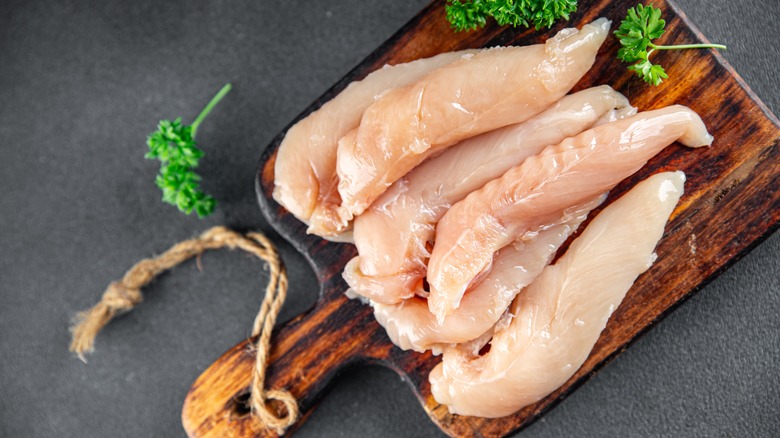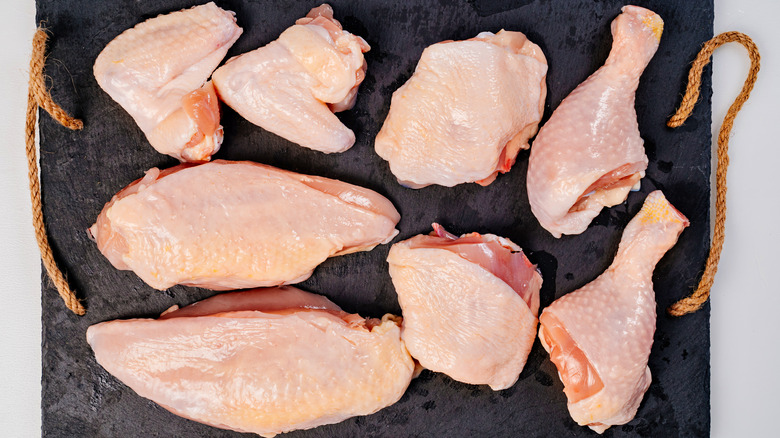If Your Raw Chicken Has White Strings, Don't Be Alarmed
When you work with raw chicken, you may notice small but tough white threads running through the muscle fibers. No need to worry — these are just the chicken's tendons! Tendons are cords of strong, flexible collagen protein that anchor muscle to bones. They are perfectly safe to eat provided the meat's internal temperature reaches 165 degrees Fahrenheit, the minimum safe temperature for any poultry, according to the USDA. Whether or not you should remove tendons from your chicken is entirely a personal choice.
While collagen is a great source of flavor in all meats, it needs plenty of low and slow heat to melt and go from tough to tender, so not every recipe is built to maximize the potential of chicken tendons. Some folks still like the chewiness of quickly-cooked tendons, while others want their meat as tender as possible. If you're unsure of whether or not to remove them, consider what kind of dish you're making.
If you're boiling and then shredding chicken for a simple chicken noodle soup recipe, you probably won't even notice any tendons. However, if you're serving whole cuts of chicken on top of pasta or in a simple fried chicken recipe, those "strings" will be more noticeable. Luckily, removing tendons is easy and there's plenty of ways to do it. Common kitchen tools like a sharp knife, fork, and paper towels are all you'll need, regardless of what method you choose.
How to remove chicken tendons
Methods for removing tendons depend heavily on the cut of chicken in question. However, there is never a need to slice the tendon out with a knife, mangling the presentation. Instead, some tricks can help you peel and pull the tendons out cleanly, leaving you with plenty of meat. Chicken wings tend to have small tendons that most people won't notice. Meanwhile, if you're a drumstick lover but can't stand tendons, there's a quick trick requiring only a paring knife. Place your knife perpendicular to the middle of the bone, where the meat is thinnest, and slice in a full circle around the drumstick's circumference. This exposes the tendons, allowing you to simply pinch and pull them right out.
White meat, namely the breast and the tenderloin, often has the most obvious tendons. Once you identify a tendon, thread it through the tines of a fork and grip the end of the white string with a paper towel. Pull the tendon while pushing against the meat with the fork to cleanly peel them apart. This is a tried-and-true method with minimal mess, and works especially well for tenderloins.
If you're a zero-waste cook, you can freeze tendons in a bag to simmer in a chicken stock later, mining that precious collagen. While it may not be the best part of the chicken to use for stock, every little bit helps and nothing needs to go to waste.


